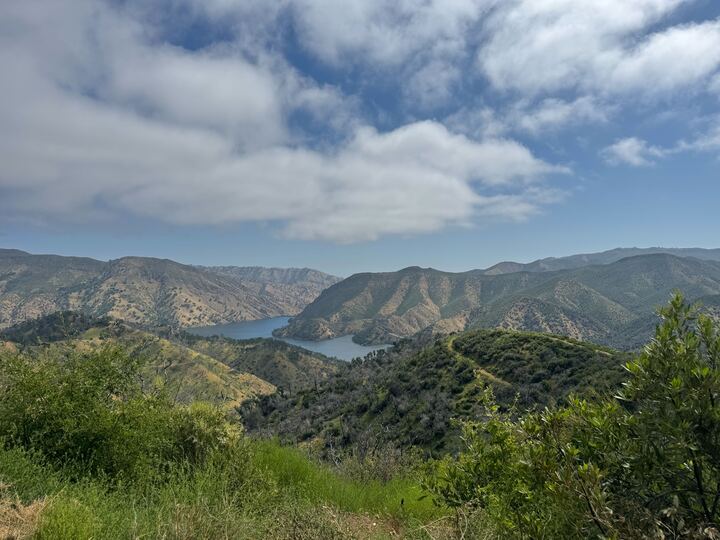Our Experiment Takes Flight! (quite literally)
May 12th, 2025
This class was very exciting as it was the first trial of our experiment! A special thanks to those that spent their time on Sunday catching 30 pipevines, most of which we were able to use in our first run!
10:00-11am
Class started with a quick debrief led by our MC Shiv to assign roles in order to make sure the trials run smoothly. The butterfly group headed down to Marshall's lab to grab our enveloped butterflies from the fridge and placed them in enclosures in the sun for around 30min to let them warm up. Luckily, we had a good amount of survivors!
The microbe group also ventured to the lab to grab supplies needed for their part in the experiment (micropipettes, the yeast, bacteria, and control solutions, and the vortex).
The flower group assembled the blocks that we used for our set up. We decided to use 6 blocks for efficiency purposes, 3 at a time for each trial with 5 flowers inserted in each. The blocks were labelled by etching the corresponding letter for each group (Y, B, C) into the sides.
Once the materials were prepared, we set up the inside of our enclosure using 3 stools placed 50in from the entrance. The microbe team then pipetted 500 microliters of each solution into the 5 flowers of the corresponding blocks. The first 3 blocks were placed in the enclosure 55in from the entrance.
The butterflies were separated when caught based on when they were last fed. One batch was starved for 16hrs while the other was starved for an unknown amount of time since we could not get them to eat when caught. Before butterflies were released into the flight cage wing condition and sex were recorded to document our sample size.
(Male with pristine wing condition)
Butterflies were released from the top/middle of the enclosure, 1 butterfly per 5 minute trial. Once released 3 people were observing and timing the total duration of the trial (5min) and the time spent on each flower. One person was filling out our data sheet and another was checking for proboscis extension.
Unfortunately, for our first two trials the butterflies remained on the side of the enclosure for the entire trial duration and did not take interest in our flowers :(
11:30-12:15pm
Our experiment was interrupted by the weather as it started to rain so we brought all of our materials (butterflies included) into the classroom to wait it out. During this time we were still productive and switched gears to discuss potential issues we've faced so far and how they can be addressed.
- Our butterflies need to be trained so they're more familiar with our flowers and see them as a food source. We should use a red gatorade solution for training so that we don't use up our nectar solution.
- If we cannot get the butterflies to land on the flowers during our trials, our backup plan is to look at the proboscis composition of butterflies caught in the field.
While confined to the classroom we began trying to get the butterflies to feed on our flowers to practice ways in which we could train them later on.
12:15-1pm
The weather had improved so we set up the experiment once again and conducted 2 more trials. In the first trial the butterfly again clung to the side of the cage, so for the second trial we released 3 butterflies at the same time to see if that would make any difference. One did land on the stem of one of our flowers, but again none of the butterflies moved from their initial landing site for the duration of the trial :(
1:00-1:30pm
Chloe led a butterfly feeding and envelope demo for those that volunteered to take care of our butterflies this week, and the flower group made some amazing new prototype flowers for next class!
1:30-2:00pm
After our set of slightly disappointing trials we delegated tasks for the upcoming week in order to prepare for Friday's class. We created a spreadsheet for butterfly counting and check in for those that volunteered to train and feed our enveloped butterflies. We also discussed the potential changes we will need to make for our next set of trials.
- Train butterflies leading up to the next set of trials so they are more familiar with our flowers.
- Instead of filling the PCR tubes with 500 microliters we will fill them with 850 microliters so that each tube is filled to the brim with solution.
- Redo flower shape since this could potentially be why the butterflies are not recognizing them as flowers.
Although we encountered a few challenges for our first set of trials, we were able to come together as a class and brainstorm some adjustments that may need to be made in order for the experiment to run more smoothly the next class.
What's Next:
- Feed and train butterflies throughout the week (one group per day Tues, Wed, Thurs)
- Potentially catch more butterflies Thursday if the ones we have now don't make it until then :(
- Think over our experimental plan, are there any other changes we can make so that it runs more smoothly?
On Friday
- Problem solve! What can we do to yield more promising results?
- Catch more butterflies if needed
- Train the butterflies we have with our new flower prototypes
- Discuss drafting the methods section of our papers



Comments
Post a Comment